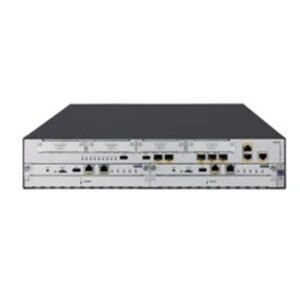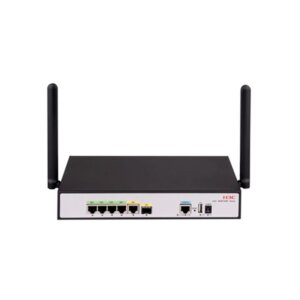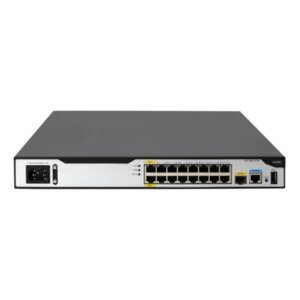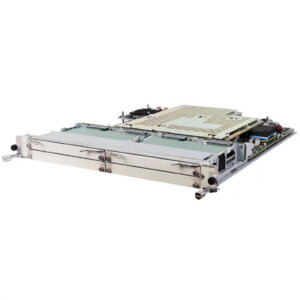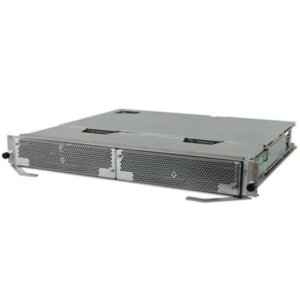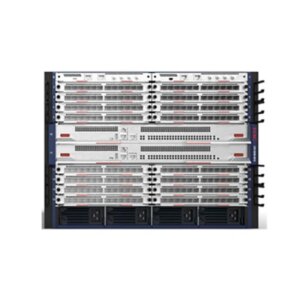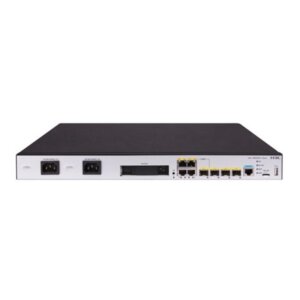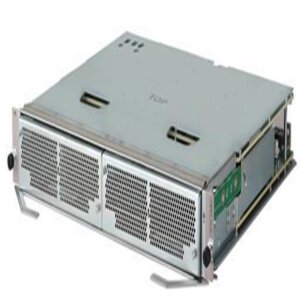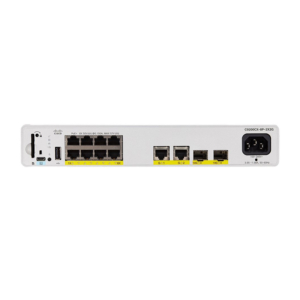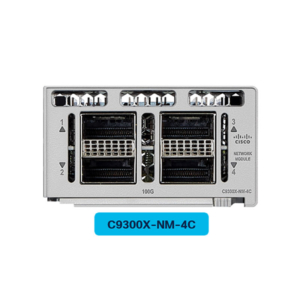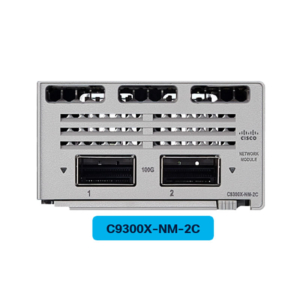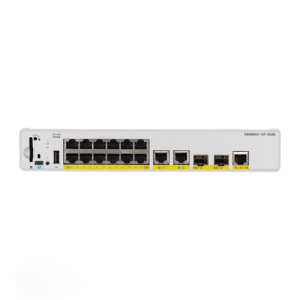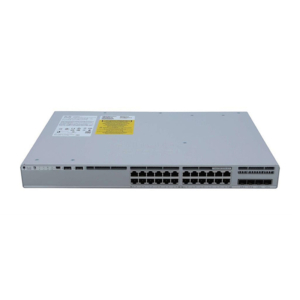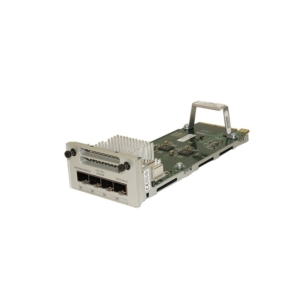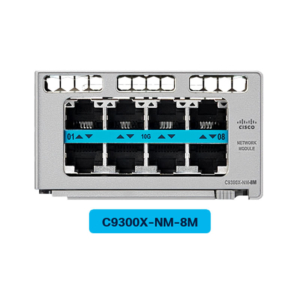H3C CR16000-F as the high-end router, focusing on Carriers Backbone/MAN and Large-Scale Industry Core Network, providing high forwarding performance, high-density ports, and rich port types. CR16000-F routers adopt CLOS architecture and distributed forwarding structure, delivering more high-availability and scalable network. Comware V7 operating system enables the CR16000-F more compatibility, which integrating Security Blade, Open Application Platform Module, making it an ideal choice for customers.
The CR16000-F routers includes the following models: CR16006-F, CR16010-F, CR16010H-F and CR16018-F to covering all network layers, providing 4/8/8/16 service slots.
 H3C CR16000-F High-End Routers Data Sheet
H3C CR16000-F High-End Routers Data Sheet
Technical Specifications
| tem | CR16006-F | CR16010-F | CR16010H-F | CR16018-F |
| MPU slots | 2 | 2 | 2 | 2 |
| Line card slots | 4 | 8 | 8 | 16 |
| Chassis | Integrated chassis, which can be installed in a 19-inch rack | |||
| Independent switch fabrics | 4 | 4 | 5 | 5 |
| Max Forwarding Capacity | 2.56Tbps | 6.4 Tbps | 25.6Tbps | 51.2Tbps |
| Bi-direction Forwarding Capacity/slot | 320 Gbps | 400 Gbps | 1.6 Tbps | 1.6T bps |
| Power module system | Support for 4 power modules (AC or DC) and N+M redundancy | Support for 6 power modules (AC or DC) and N+M redundancy | Support for 8 power modules (AC or DC) and N+M redundancy | Support for 16 power modules (AC or DC) and N+M redundancy |
| Dimensions (H × W × D) | 353 × 440 × 660 mm (13.90 × 17.33 × 25.99 in), 8 RU | 931 × 440 × 660 mm (34.89 × 17.32 × 25.98 in), 21 RU | 931 × 440 × 640 mm (36.66× 17.32 × 25.98 in), 21 RU | 1687 × 440 × 640 mm (66.42 × 17.32 × 25.98 in), 38 RU |
| MTBF | 41.68 | 40.46 | 27.03 | 22.27 |
| MTTR | 0.5 hours | 0.5 hours | 0.5 hours | 0.5 hours |
| Unicast routing | IPv4/IPv6 dual stack
Static routing, RIP, RIPng, OSPF, OSPFv3, IS-IS, IS-ISv6, BGP-4, and BGP4+ VRRP and VRRPv3 IPv6 neighbor discovery, PMTU discovery, TCP6, ping IPv6, traceroute IPv6, socket IPv6, static IPv6 DNS, specifying an IPv6 DNS server, and TFTP IPv6 client IPv4 to IPv6 transition technologies ICMPv6 MIB, UDP6 MIB, TCP6 MIB, and IPv6 MIB, etc. ECMP Policy-based routing Routing policies Tunneling technologies, such as GRE IP FRR |
|||
| Multicast | PIM-DM, PIM-SM, PIM-SSM, MSDP, MBGP, anycast-RP, etc.
IGMP V1/V2/V3 and IGMP Snooping v1/2/3 PIM6-DM, PIM6-SM, and PIM6-SSM MLD V1/V2 and MLD Snooping v1 Multicast policies and multicast QoS |
|||
| MPLS VPN | P/PE functions, compliant with the RFC 2547 bis standard
Three multi-AS MPLS VPN methods (Option1/Option2/Option3) Hierarchy of PE (HoPE) |
|||
| Multi-role host
Layer 2 MPLS VPN functions MPLS TE FRR and LDP FRR 6PE and 6vPE Distributed multicast VPNs ACL-based traffic filtering for VPNs MPLS ping and MPLS traceroute L2VPN access to L3VPN QinQ access to VPLS |
||||
| BRAS | Remote AAA based on RADIUS/TACACS+ protocol
iTA Unified access authentication for large numbers of wired and wireless users Mobility and once-for-all authentication for wireless terminals BRAS IRF routing stateful failover PPPoE, PPPoEoVLAN, and PPPoEoQ Layer 2 Portal, Layer 3 Portal, and QinQ Portal access authentication IPoE, IPoEoVLAN, IPoEoQ, DHCP, and unknown IP address access authentication VPN access authentication L2TP |
|||
| ACL | IPv4/IPv6 standard ACL and extended ACL
Layer 2/Layer 3/Layer 4-based ACL Ingress/Egress ACL |
|||
| QoS | Hierarchical QoS (HQoS) and queue scheduling mechanisms including PQ, WFQ, and CBWFQ
Traffic shaping TD/WRED Priority marking/remarking 802.1p, TOS, DSCP, and EXP priority mappings Multicast QoS |
|||
| Ethernet | 802.1Q
802.1Q VLAN Trunk QinQ 802.3d (STP)/802.3w (RSTP)/802.3s (MSTP) IEEE 802.3ad (link aggregation), static port aggregation, and inter-card link aggregation Port mirroring and flow mirroring |
|||
| Virtualization | Virtualizes multiple physical devices into a virtual fabric, manages devices and device forwarding on a unified interface, and supports multi-chassis link aggregation | |||
| Network traffic analysis | NetStream data export in v5/v8/v9
Traffic sampling and accounting Multiple log hosts Hardware-based network traffic analysis IPv4/IPv6/MPLS traffic analysis Port-based inbound and outbound traffic analysis Flow monitor to monitor illegitimate traffic flows |
|||
| Availability | 1+1 redundancy backup for critical components including the MPUs, switching fabric modules, power supplies, and fans
Passive design for the backplane to prevent single point of failure Hot swapping for all components NSF, NSR, and GR IP TRUNK, MP, and ETH port aggregation PW redundancy, Ethernet OAM, and Y.1731 BFD |
|||
| Security | Firewall
Hierarchical user management Password protection AAA SSHv2 providing secure encrypted channel for user login Standard and extended ACLs for packet filtering to prevent network attacks Preventing attacks by using ARP packets, unknown multicast packets, broadcast packets, unknown unicast packets, local subnet route scanning packets, packets whose TTL is 1, and other protocol packets URPF for preventing network attacks using source address spoofing OSPF, RIPv2 and BGPv4 plain text authentication and MD5 authentication SNMPv3 |
|||
| System management | In-band and out-of-band management
Command line configuration through Console/AUX Modem/Telnet/SSH2.0 File download/upload management through FTP, TFTP, Xmodem, and SFTP SNMPv1/v2/v3 RMONv1/v2, supporting 1, 2, 3 or 9 groups NTP NQA Failure alarm and automatic recovery Data logs ICMP Syslog Traceroute Multiple user-line Telnet access |
|||
 IT Network Equipment Supplier
IT Network Equipment Supplier


 Is your product original?
Is your product original? Yes, our product is original, we only sell original H3C product.
Yes, our product is original, we only sell original H3C product.



